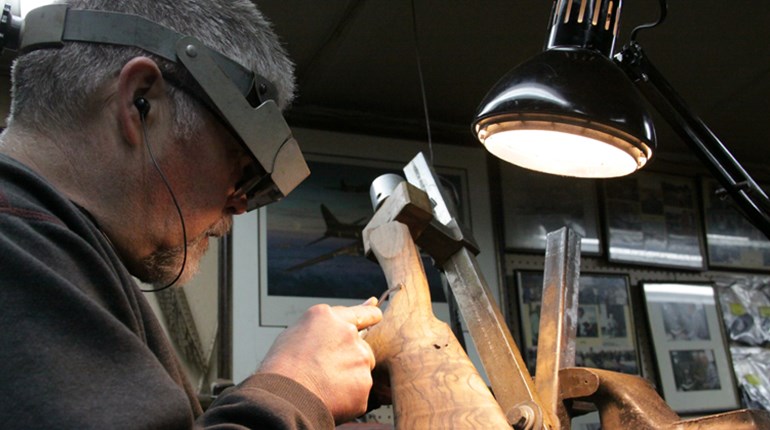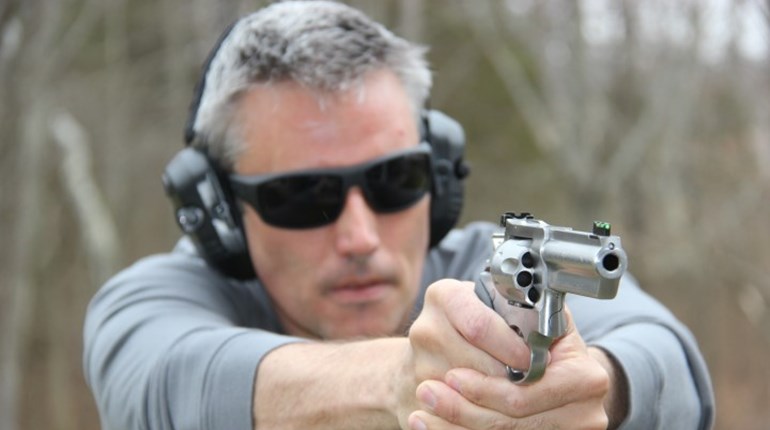

Pick up any entry-level, commercially manufactured 1911 and, chances are, one of the first things you'll notice is it rattles. While not necessarily a bad thing, the sound comes from its parts being fit together with less precision than other, more-expensive models. A prime example is any of the abundant G.I. 1911s produced by various arsenals for our U.S. military, all of which clattered like a mariachi's maraca; and although the loose tolerances contributed little to the 1911's accuracy, it aided in helping the pistol function reliably under adverse combat conditions. In the second volume of "The Complete M1911 Assembly Guide," authors Kuleck and Oldham describe frame-to-slide fit in three categories: "Interference fit, where the slide will not fit on the frame. Perfect fit, where the slide moves freely on the frame, but does not discernibly wobble; also described as a `tight fit.' Clearance fit, where the slide `rattles' on the frame; also described as a `loose fit.'"
Naturally, a 1911 must have some clearance between the frame and slide to function. Therefore, the "perfect fit" indicative of most custom-made 1911s is actually a minimum-clearance fit, designed to allow the least amount of clearance between the slide and frame—while still allowing the pistol to cycle reliably—and since the likelihood of me venturing onto a battlefield is low (even with the advent of the Action Trackchair) a 1911 configured for self-defense doesn't require that much clearance to function reliably. While I have yet to find corroboration in any of my reference material, I suspect too much clearance is a bad thing, because it allows for addition side-to-side movement, or wobble, which I believe would have a negative impact on the pistol with problems, not the least of which would be to cause the frame rails to wear unevenly. Conversely, a clearance fit offers the least amount of room for its action to cycle straight back, enhancing the pistol's reliably and overall lifespan.
Most of today's aftermarket frames are machined with rails that are oversize for a custom fit. While many professional pistolsmiths employ technology such as CNC and milling machines combined with hand fitting to control the degree of separation of parts for strict tolerances, it's not necessary. Among my hodgepodge of parts was a matte-stainless Essex frame, which had accumulated more than a decade's worth of dust while banished in the back of my safe. (In spite of the easy access, wanting to keep costs low—and the company being out of business—I opted to use the Essex frame primarily because it was my local gunsmith's first choice when building a 1911 from scratch, and his recommendation that fact alone was good enough for me dust it off.) Eventually, Gary Smith at Caspian talked me into using one of their frames, which enabled me to hone my skills (no pun intended) on the Essex until the new frame's arrival.

I decided to pair it with a commander-length Caspian Damascus steel slide. In spite of the added expense, using two different steels would prevent the two metals from galling, while limiting the pistol's aesthetics among one of its chief components helps keep the pistol free from unnecessary frills. Undoubtedly, the four tools that proved the most useful were a 1911 Frame Rail Sanding or Stoning Tool from Everglades Ammunition and Reloading, (a fixture designed to hold the stone perpendicular to the frame during and final stages of fitting) along with the company's 1911 Slide Measuring Tool. Once installed, it can be adjusted to the degree of clearance you want, before placing it in your micrometer for a precise measurement of the slide's width, thereby eliminating the need for lapping. (The gentleman at Everglades Ammo developed the tool as an alternative to using lapping compound. Critics of lapping compound complain citing the substance's knack from going everywhere, creating excessive clearance where it's not needed.) Despite its weight, an Estwing 45-ounce, synthetic Dead-blow hammer was a godsend in coaxing initial movement from the slide, tapping stoutly on both the muzzle and breech end of the slide to mimic reciprocation, with no fear of marring.
There's more, so stay tuned.





































